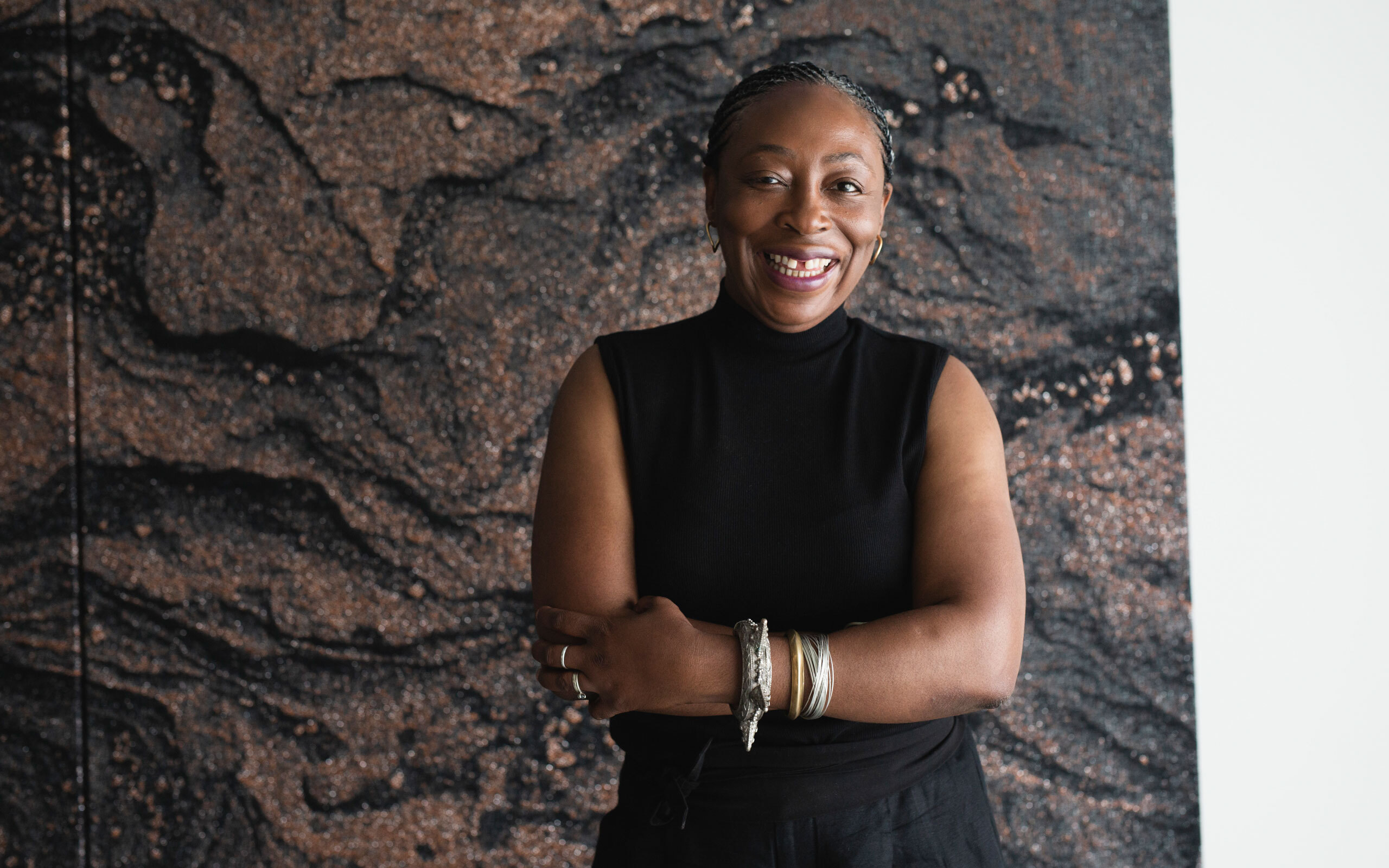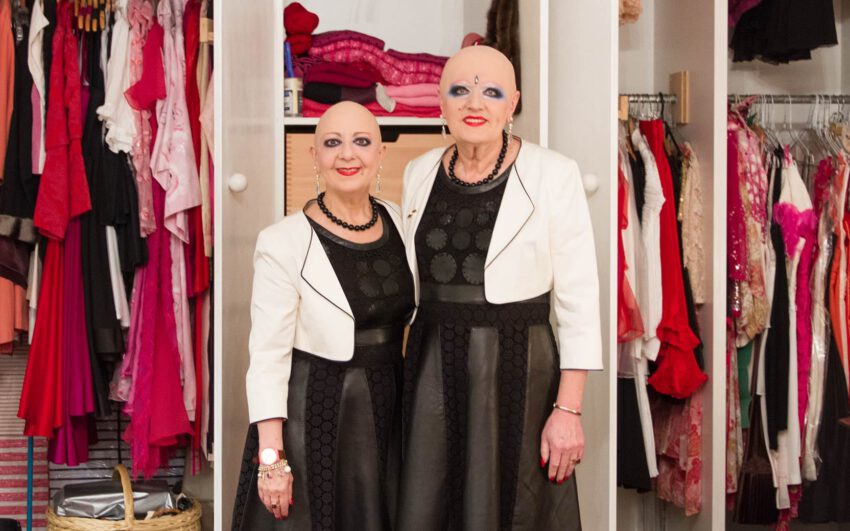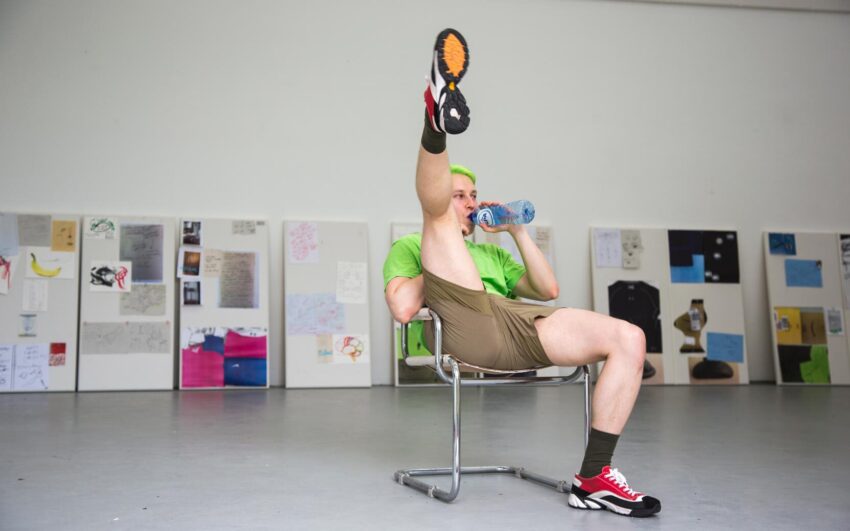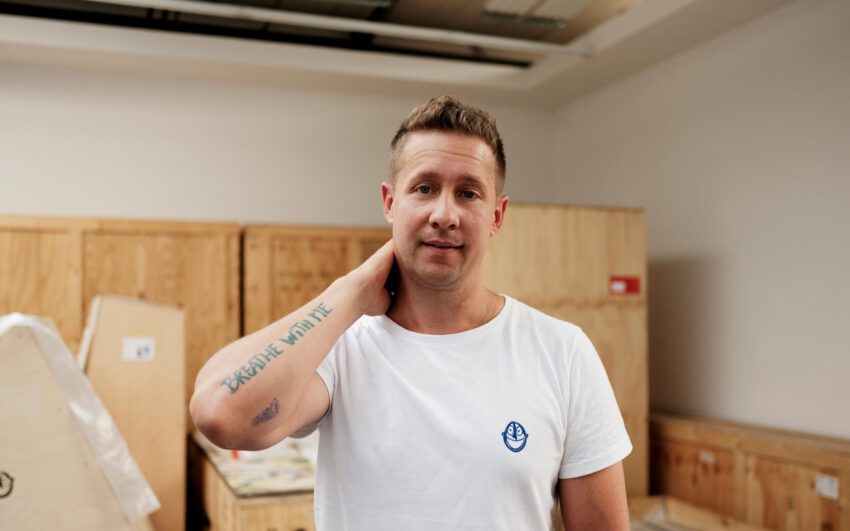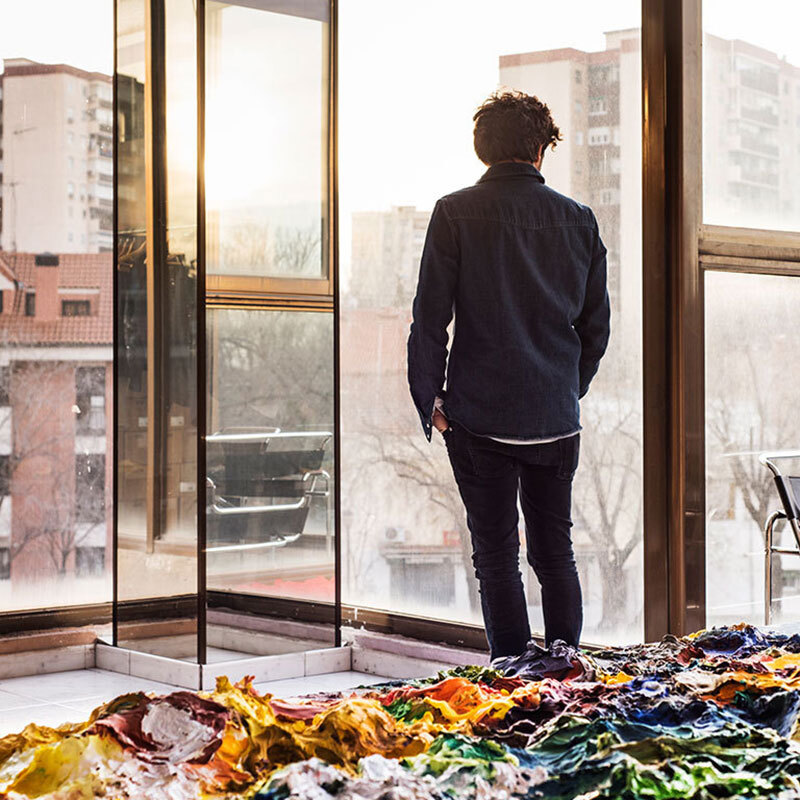Visual artist Otobong Nkanga is a global citizen raised in Lagos, who has lived in Paris, Amsterdam, and Antwerp, and works with people all over the world. She enjoys a particularly broad and informed perspective on the planet. As an artist, but mostly simply as a human being with a physical body located in space and time, she relates to global circulation and production in local ways that are fully embodied in her art practice.
Otobong, you’re particularly busy at this moment in the aftermath of the pandemic, and you’re preparing two solo exhibitions that open this autumn. Is that right?
Yes. On the 24th of September [2021] my show at Castello di Rivoli opens, and a month later on the 23rd of October I will have an exhibition at Kunsthaus Bregenz.
And they’re both solos! No wonder you have a lot of work. To what extent are they connected?
All my works and projects are related in a way, but a lot of them are looking at working locally: I get inspired by local materials and work with local people. The two shows have certain similarities but their propositions are different. At Castello di Rivoli I have five or six adjacent rooms that seem to flow around the building, where I’m working on a rope that goes through each of them. I show sculptural pieces made out of glass and out of wood, that are tied along to each other as well as to sound pieces. It’s almost like the rope carries all the different elements. For the title of the exhibition, I chose Of Cords Curling around Mountains. My show at Kunsthaus Bregenz, which goes without a title except for my name, is a different constellation because the building has four floors. I needed to think about it in a vertical rather than a horizontal way – in slices. An architecture itself proposes a different way of working. While at Castello di Rivoli the visitor goes around, in Bregenz you have to climb to get up. There will be four tapestries that make one story, but cut in four parts. They are installed on what is essentially the same wall, part of the museum architecture by Swiss architect Peter Zumthor.
Do they represent anything pictorially?
Yes. As a whole they’re titled Unearthed (2021). The four parts refer to the different levels of the ocean, with subtitles derived from deep sea terminology: Abyss, Midnight, Twilight, and Sunlight. The first Abyss refers to the deepest region of the ocean below a depth of 6,000 meters and is known as the “hadal zone” [also known as the hadopelagic zone] in reference to Hades, the Greek god of the dead and king of the underworld, with which his name has become synonymous. These are the coldest, darkest regions where marine creatures are able to live around hot vents and in complete darkness, but it’s also where mining companies dredge for valuable ores including cobalt, copper, and nickel. The regions above the abyssal zone gradually become lighter, through Midnight, then Twilight where light from the sun begins to illuminate the water, to Sunlight which is above the surface. We see debris consisting of hands and other body parts, lost in the sea, and which through transformative shifts of energy have become mineral in form and contain the ores which are necessary to fuel our technologies. We also see a pin that pierces all four regions which represents the mining activity.
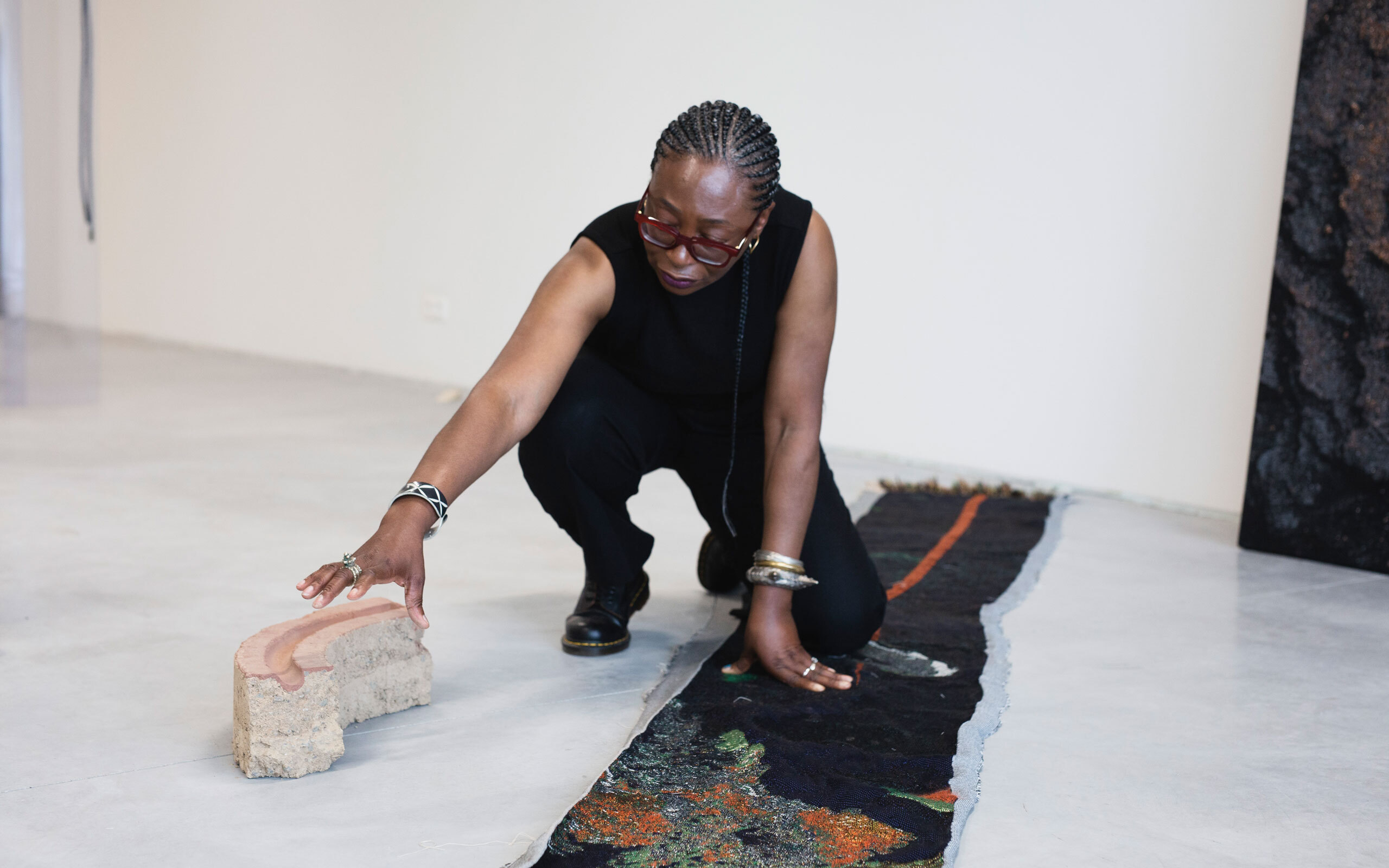
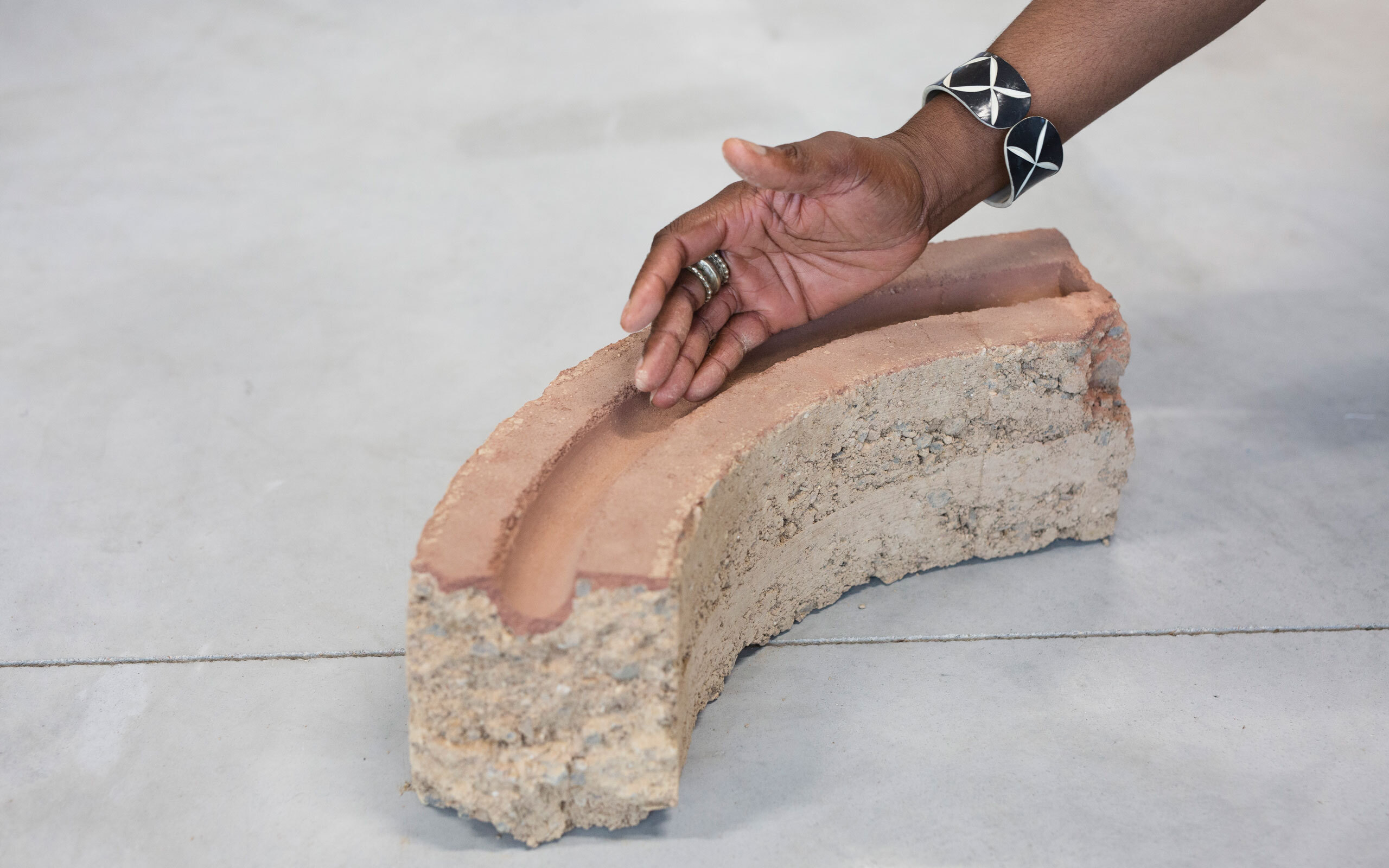
The earth and local landscapes are incredibly important for you.
That is part of the reason I like to engage with people who know the region and the environment very well. In Bregenz I also work together with local architect Martin Rauch. He works with earth – he makes earth houses but also earth sculptures. We created a landscape on the top floor for which we use earth from the area. With Martin I look at ways of working with materials that can transform and go back to the earth without any kind of pollution. All is interconnected: if I take a tree, I’ll have to plant perhaps five other trees. You don’t just take, but think how you can replenish at the same time. What does it mean to extract from, let’s say, a pine tree for your work? Because I care about this, a lot of my work will be locally based. In Castello di Rivoli there are wooden sculptures made out of a dead tree we found nearby – we are using all of it. They are elements that reveal and connect to local flora and fauna, and local soil.
The idea of Unearthed is very strong: the four parts of the tapestry are narratively connected but physically separated. I can’t help but think of it as an analogy of our world, which is one, yet torn apart. The continuity of the planet suffers from ruptures, just like humankind suffers from its dispersion.
Within my work in general I think a lot about the interconnectedness of things. When you see the tapestry, it goes from deep sea to landscape – one cannot separate what happens in the abyss of the hadal zone from what happens on the sea surface. The way the oceans are cooled by the flow between the Arctic and the Antarctic regions affects the climate, which is not stable. It’s important for me to work on the correlation of worlds that are visible to worlds that are not. My works move between the non-visible and the non-tangible to places that are concrete, places that awaken the senses: touch, smell, sight, sound. At the same time, coming from a world within the African continent – I’m Nigerian originally but now also Belgian – I realize that information here becomes very visible when there’s a big story, with many deaths and so on, but at the same time there are so many stories that we don’t hear even if they’re strongly connected to Belgium. It’s this separation that allows for us to believe that we’re different, that a certain culture or space has nothing to do with where we are living at that moment. Human beings have hardly any understanding of other places unless they really move or go visit and see and have a physical and emotional connection to them.
Artworks can collapse different worlds together within their space. I’m interested in worlds that meet through an artwork.
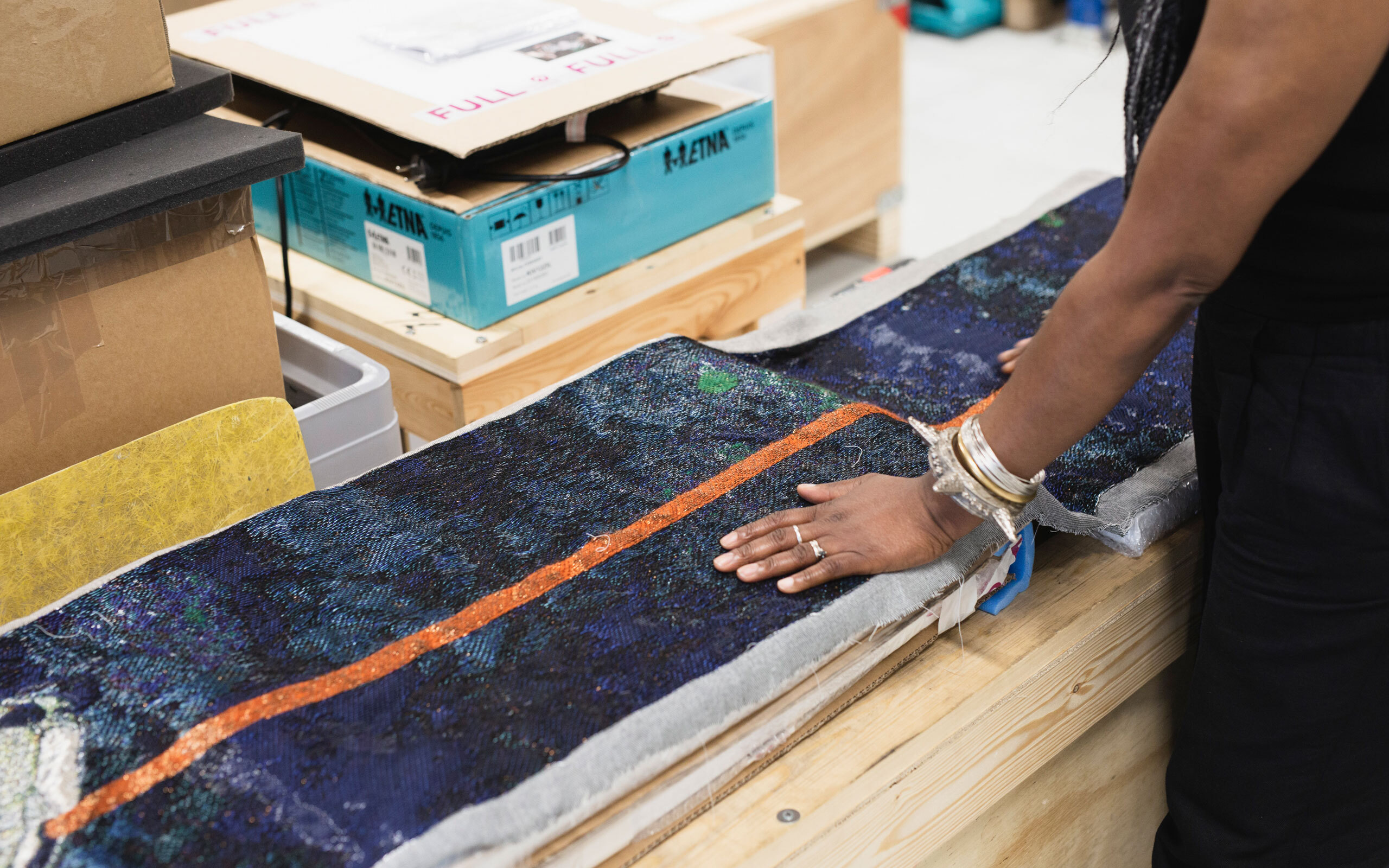
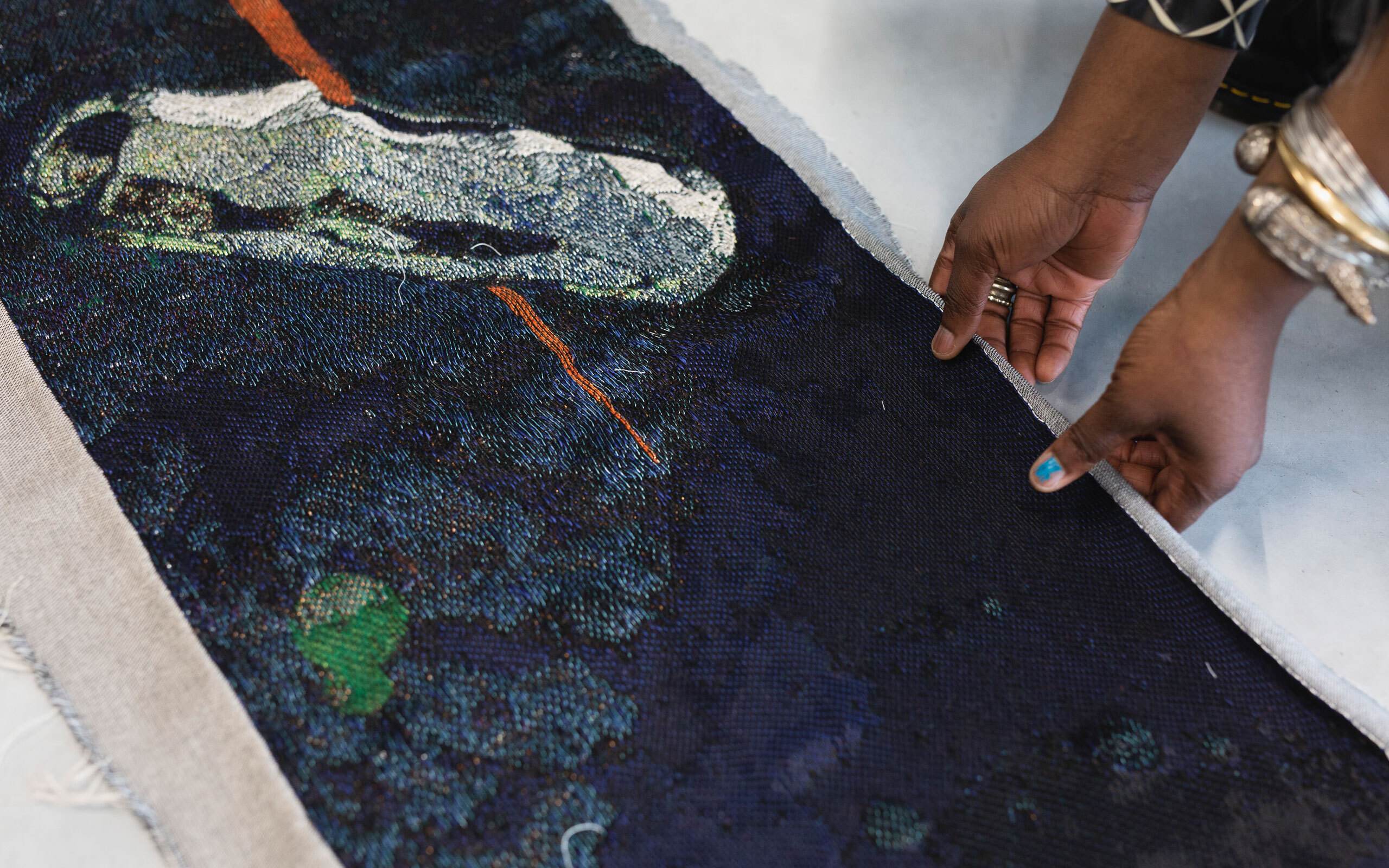
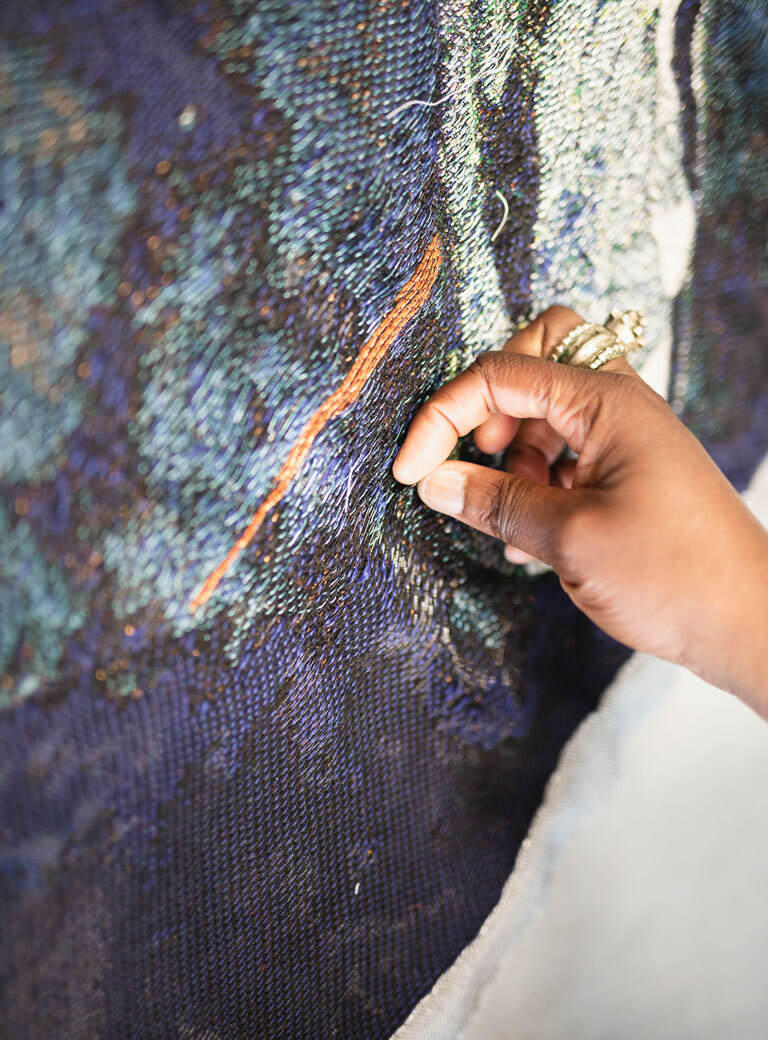
A statement on your website reads “By exploring the notion of land as a place of non-belonging, Nkanga provides an alternative meaning to the social ideas of identity.” What do you mean by that?
I could perhaps write “belonging and non-belonging”, as they go together. You may feel like you belong to a place, but the structures around you constantly put you in a place where you do not belong. This happens for instance through economy and political language, like Trump’s in America where people have stayed in a place, invested in it, but are constantly made to feel that what they are, does not belong. Not only politics or social interaction but also the environment itself can push you out of the place where you belong, due to the impacts we’ve had in certain environments. The lifeforms become unbearable: the water can’t be drunk anymore, the soil can’t produce anything, the air is unbearable. There are many layers to that notion of non-belonging, but also the strive to belong comes in view. It’s something that I could think about in function of that text: there’s something about ’longing’ to be somewhere and to ’be’ in that place without necessarily feeling that you ’belong’ there.
You seem to have a dialectics between belonging somewhere, the “locality” of people and other nature and things, and being connected to all kinds of other things that are very far away. Maybe it has to do with the era we’re living in.
In 2007/08, I reworked a piece by Allan Kaprow originally called Baggage (1972), where sand is dug from a specific area and taken to another, and altered the title slightly to Baggage 1972.2007. It was very important for me to enact because I took sand from the Netherlands and brought it to Nigeria. I poured it onto the beach and the sea washed it away. Then I took sand from Nigeria and brought it to the Netherlands where I distributed it to different sites. Sand has a universal connection. When you think about soil, each of us knows what it is – similar to when you think of a rock or a tree. They are things that are so banal, universal, that we forget that these are things that we all need and keep us alive. Then there are other things that make us different – through culture, not through nature itself – we develop and design something that makes us different. They differentiate us in the way we make, talk, the language we speak, the food we eat. At the same time, we realize it’s not so far. It’s determined by climate, by light, the way we mix raw materials, the way we consume: it affects our lifestyle. If you’re living in a cold place, you have time to be inside and work quietly. When you’re living outside in the heat you have time to take life a little less seriously. It’s by design of the environment that things take form. For me it’s completely connected and that’s what gives the balance. But once the balance is disrupted by exploitation, we have a problem. One might feel superior to the other, exploit the other. Through our differences we see our power – that’s the balance in society.
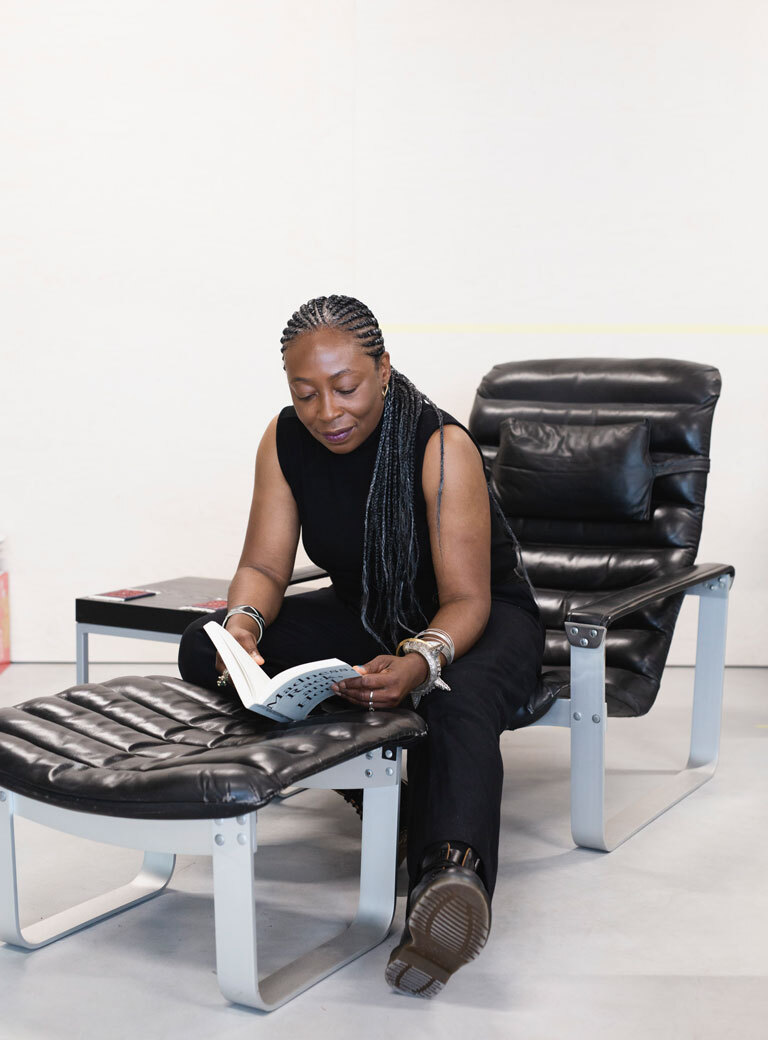
In a perverse way, one of the side-effects of exploitation and of circulation of goods and people over the planet through all kinds of violent powers, is that it has made humankind more connected.
Yes, somehow people definitely get more connected. We fly. Through slavery people were moved from one place to another. But what is the quality of connection? Certain connections are through exploitative means and through violence, and others are made through love. The quality of connections and power is part of my thinking about my work. Rather than a romantic way of looking at things, I think of being connected through the change of our palettes, though our ways of looking at others, through materials that different people all of a sudden have to engage with.
How does your life experience between different continents play a role in that?
When I was studying art in Paris, we were looking at art from a single perspective – through a Eurocentric lens. Very important parts of understanding the world are eliminated from a place that designed itself as the intellectual capital of the world. It made me think about how the world fragments time, reduces spaces, and who has the power to give the idea that this [the west] is the ultimate place of reflection and thinking. When you look at Chinese history, or Japanese, West-African, South-African, or Amazonian history, you will see that there are many other histories that align together with western knowledge to make things even more expansive. That was my main issue with understanding how things connect. How can I put a Cheik Anta Diop next to a Deleuze? How do I do that? It seems so far away, while it’s not!
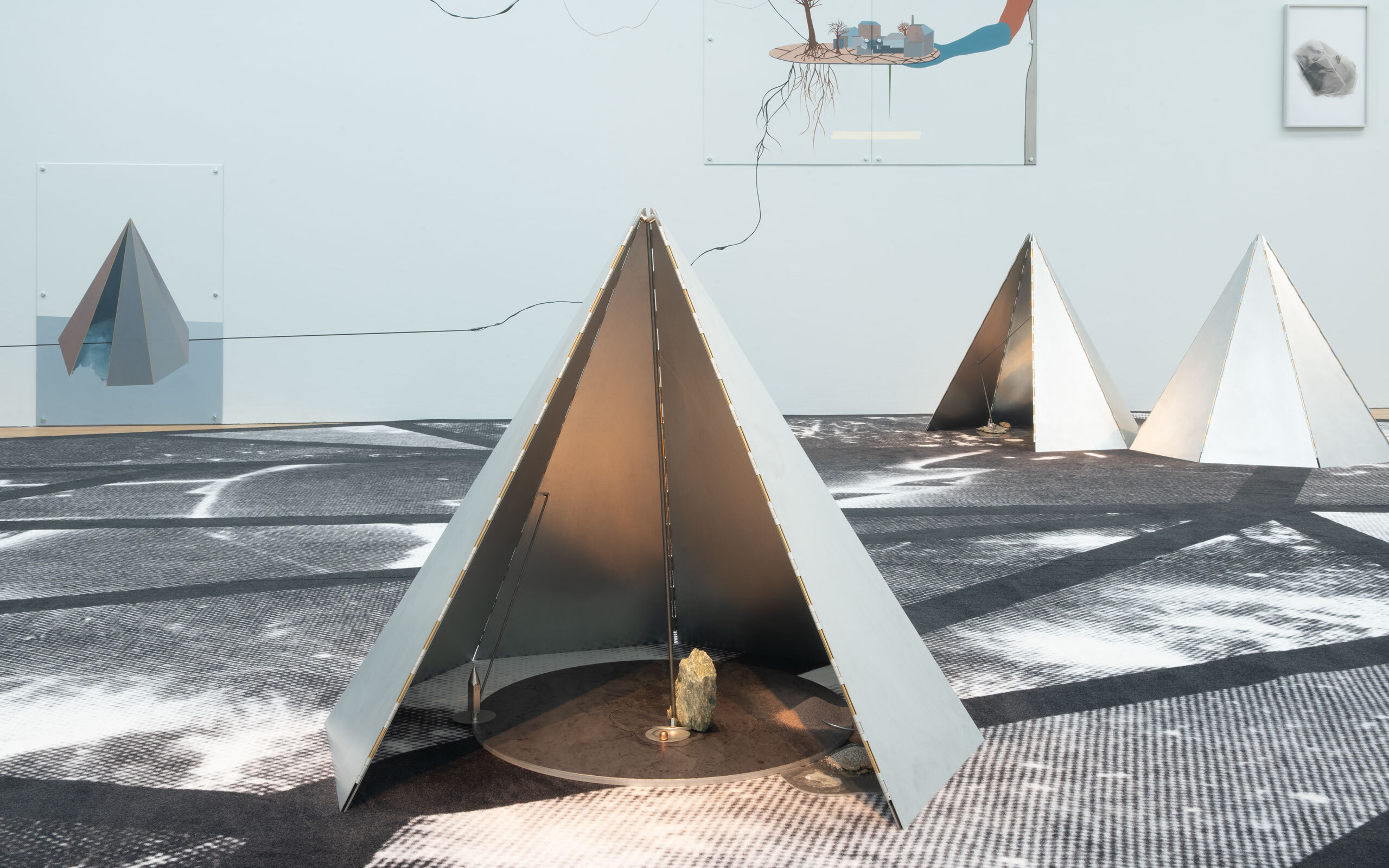
From Where I Stand, 2015 – 2020, Installation view, Middlesbrough Institute of Modern Art, Photo: Jason Hynes, Courtesy of the Artist, © Otobong Nkanga
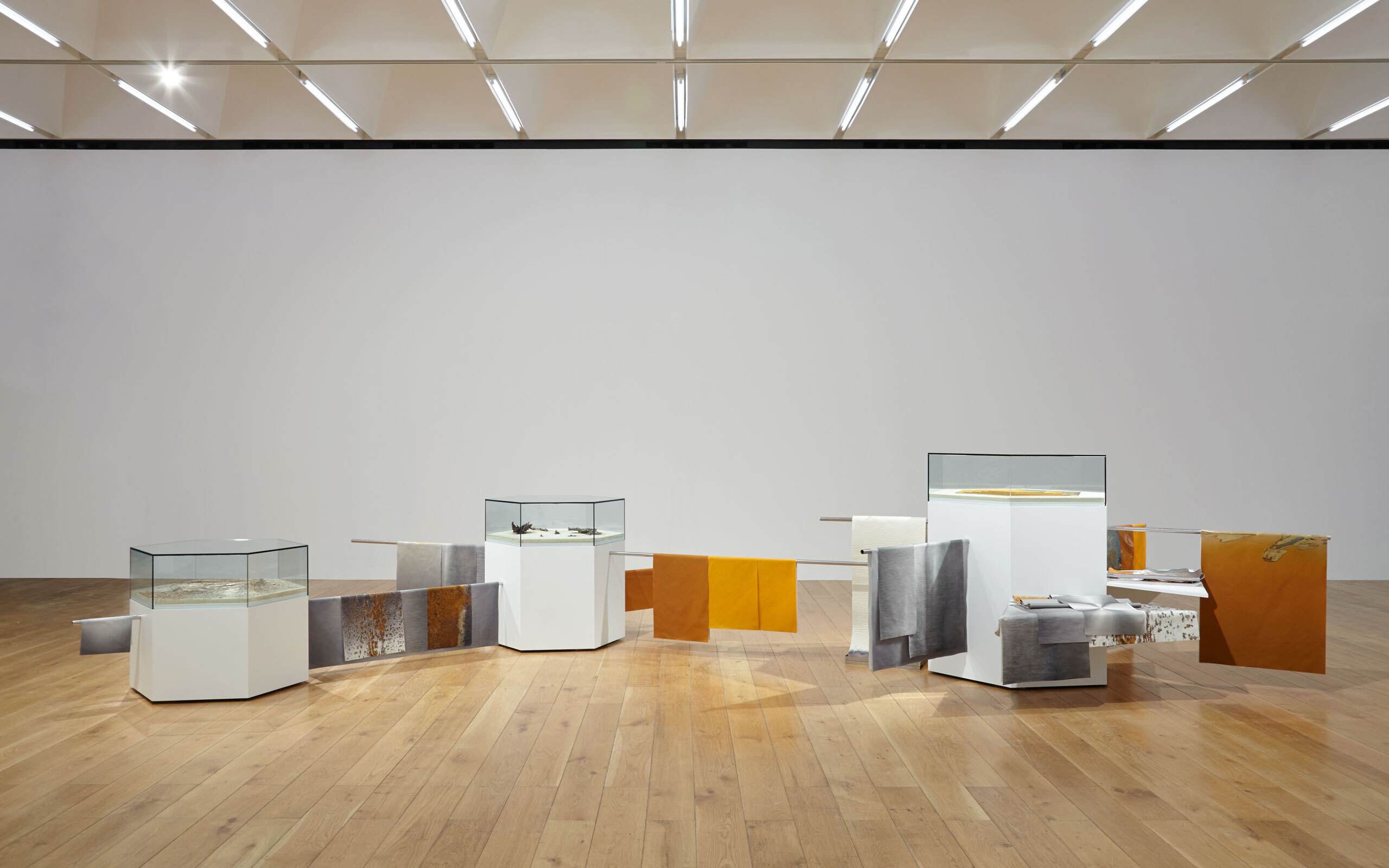
Steel to Rust, Rust to Debris, Debris to Dust, 2016, Installation view, Nottingham Contemporary, Photo: Stuart Whipps, Courtesy of the Artist
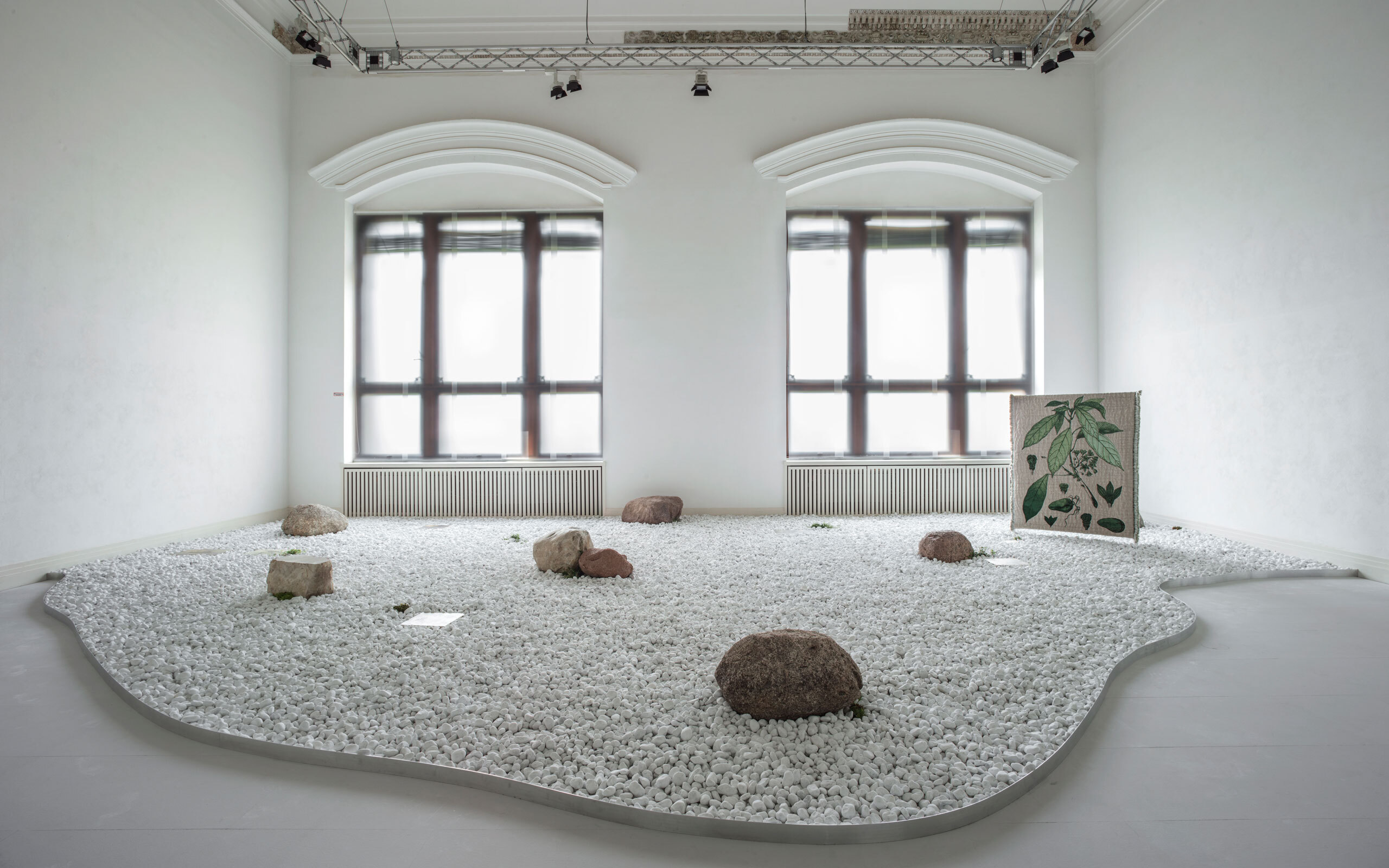
Taste of a Stone, 2010 – 2020, Installation view, Gropius Bau, Berlin, Photo: Luca Girardini, Courtesy of the artist, © Otobong Nkanga
Could you give an insight into how your work comes about?
Art can be a trigger to meet people who have incredible knowledge of making, thinking, or acting. Art can be a very fast way of learning from them. This can influence the work very deeply, so sometimes I allow space for other people to make what they want, knowing that I can trust their ethics. It’s a matter of understanding what kind of engagements people have, how one thinks, how that affects the way one works – I’m interested in that.
Can you give a concrete example?
When I did Carved to Flow (2017-ongoing), the project for documenta 14 around soap, it was very different from the soap I made when I was a kid. Because I know how to do that, I wanted to meet someone who knows the procedures to be able to make it into a product with all the laws that apply. I met someone who knew exactly how to do this: from finding the right ingredients that have to be legally certified, to clinical tests on prototypes, of which we did a lot with different kinds of soaps until we got what we wanted, to meeting lawyers for understanding the taxes that applied between Greece, Germany, and Nigeria and setting up a foundation somewhere, somehow, where the proceedings could go rather than to me personally. I was constantly learning how to work through continents, all in relation to ingredients that come from different parts of the world.
Is Carved to Flow also about discovering where all the elements come from?
I started understanding how products and money move, what it means when someone from Kalamata in Greece gives me their knowledge, their oil… and what it mean to their olive trees. And when now I see images of the wild fires in Greece or the south of France: what does it mean to the olive oils? What does it mean to the cost of a tree of over a hundred years? One may think “Oh no, fire!” but it’s much deeper than that. It’s about loss of heritage which makes me realize that we’re really lucky to know how to make certain things because our knowledge of it could have been lost ages ago through fires, wars, conflicts: many things that could have been transmitted are gone. We’ve seen in real-time the loss of knowledge and material.
So Carved to Flow is not just about soap?
It’s a project that goes through shifts. The first phase was a laboratory in Athens where we collectively manufactured soap. The second phase was in Kassel dealing with storage and a performance about selling. The third phase now is a foundation in Nigeria entering into a school as a thinking process. And here in Antwerp it will be a workshop with a school as a way of thinking about soil, land, and shifts in goods by looking at the city. The way we started speaking about this artwork was about being multiple: to be able to collapse, to fail, to start again. And through thinking it’s a failure, it’s not – it’s just a shift of energy and a transformation of ideas.
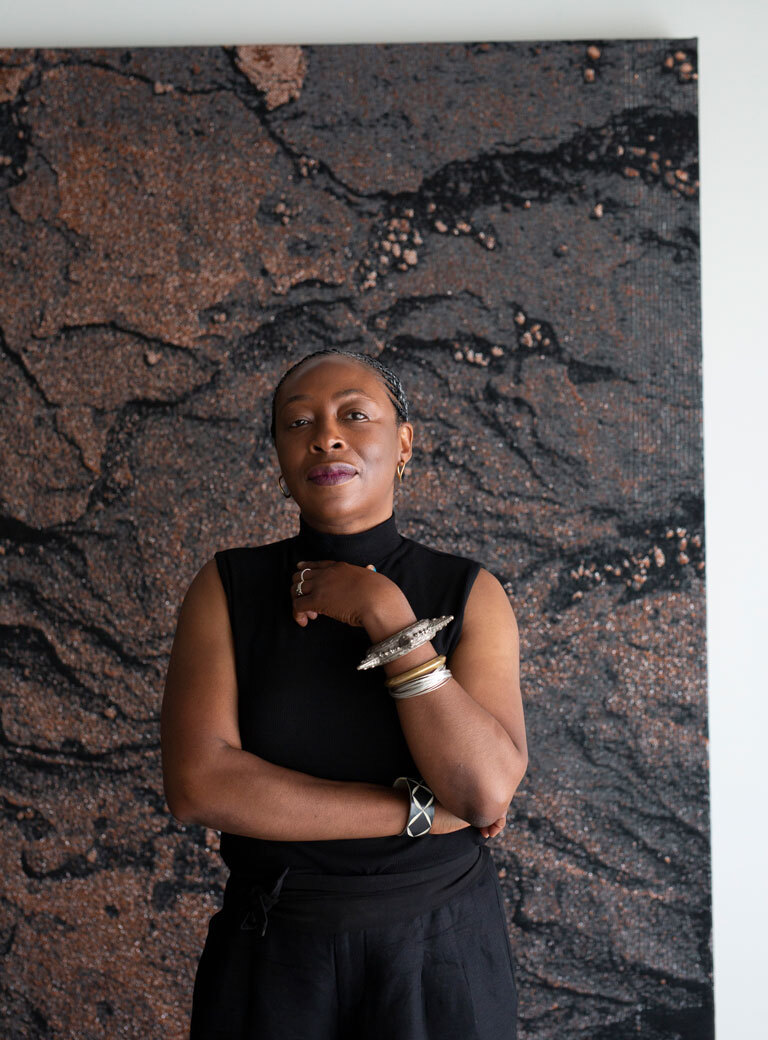
Interview: Jesse van Winden
Photos: Dries Segers


